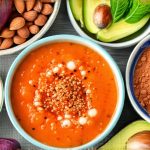Stomach cramps accompanying indigestion are an incredibly common experience, often leaving individuals feeling uncomfortable, bloated, and generally unwell. It’s something most people will encounter at least occasionally, ranging from mild annoyances to temporarily debilitating pain. Understanding the connection between these two – the cramping and the digestive upset – is key to managing symptoms effectively and knowing when a more serious concern might be present. This isn’t simply about feeling “full” after a large meal; it’s about recognizing specific types of discomfort that signal your digestive system isn’t functioning as smoothly as it should.
Indigestion itself describes a general sense of discomfort in the upper abdomen, often characterized by feelings of fullness, bloating, nausea, and sometimes heartburn. The cramps that accompany this aren’t necessarily caused by indigestion directly, but are frequently a consequence of the digestive process being disrupted. They can be triggered by many things – what we eat, how quickly we eat it, stress levels, or even underlying sensitivities to certain foods. Recognizing triggers behind digestive upset is crucial for management. Recognizing the nuances of these cramps—their location, intensity, and what seems to trigger them—can provide valuable insight into your individual digestive health and guide appropriate self-care strategies. This article will explore those nuances, offering a deeper understanding of this common experience.
Understanding the Connection: Indigestion & Cramping
The link between indigestion and stomach cramps is rooted in how our digestive system functions. When we eat, food travels through the esophagus to the stomach, where it’s broken down by acids and enzymes. From there, it moves into the small intestine for further digestion and nutrient absorption. Indigestion often occurs when this process isn’t running smoothly – perhaps too much acid is produced, or the stomach doesn’t empty quickly enough, or food isn’t being properly broken down. This disruption can lead to gas production, inflammation, and ultimately, cramping as the muscles in the digestive tract attempt to move things along.
The cramping sensation itself arises from the involuntary contractions of intestinal muscles. These contractions are normally what propel food through your system – a process called peristalsis. However, when indigestion causes an overload or irritation, these contractions can become more forceful and frequent, leading to pain. It’s important to distinguish between different types of cramping; a quick, fleeting cramp might simply be gas moving through the system, while a prolonged, intense cramp could indicate something more significant is happening. Often, indigestion-related cramps are accompanied by other symptoms like belching, flatulence, and a general feeling of being unwell. Recognizing symptoms can help determine the severity.
The location of the pain can also provide clues. While generalized abdominal discomfort is common with indigestion, cramping tends to be localized – perhaps in the upper abdomen, lower abdomen, or even radiating to the back. Identifying where you feel the cramps most acutely helps understand which part of your digestive system might be affected and potentially pinpoint the cause. Furthermore, understanding when the cramping occurs – immediately after eating, several hours later, or at night – is also important information for self-assessment.
Recognizing Different Types of Cramps
Cramps aren’t all created equal; their characteristics can help determine the underlying cause and inform appropriate action. Here are some common types you might experience:
- Spasmodic cramps: These are sharp, sudden pains that come on quickly and then subside relatively fast. They’re often associated with gas or bloating and may be relieved by passing gas or changing position. This is frequently what people associate with indigestion.
- Colicky cramps: These tend to be more intense and wave-like, building up gradually before peaking and then slowly fading away. They can last longer than spasmodic cramps and often occur in the lower abdomen, sometimes signaling issues further down the digestive tract.
- Constant, dull aches: While not technically “cramps” in the same way as the others, a persistent, low-grade ache in the stomach area can also accompany indigestion. This might suggest inflammation or ongoing irritation within the digestive system.
It’s crucial to pay attention to what triggers your cramps. Did they start after eating a specific food? Are you more prone to them when stressed? Do they worsen after exercise? These observations are invaluable for identifying potential sensitivities, dietary triggers, and lifestyle factors that contribute to your indigestion and associated cramping. Keeping a food diary or symptom journal can be extremely helpful in this process. Digestive recovery is often needed after severe episodes.
Dietary Considerations & Indigestion
What we eat plays a huge role in both indigestion and the resulting cramps. Certain foods are more likely to trigger digestive upset than others. These include:
- Fatty, greasy foods: They take longer to digest and can increase acid production.
- Spicy foods: Can irritate the stomach lining and cause inflammation.
- Caffeine & Alcohol: Both can stimulate acid production and disrupt digestion.
- Carbonated beverages: Introduce excess gas into the digestive system.
- Dairy products (for those lactose intolerant): Can lead to bloating, gas, and cramps.
However, it’s not just what you eat but also how you eat that matters. Eating too quickly, swallowing air while eating, and overeating can all contribute to indigestion and cramping. Practicing mindful eating – slowing down, chewing thoroughly, and paying attention to your body’s fullness cues – can significantly reduce these issues. Furthermore, smaller, more frequent meals are often easier for the digestive system to handle than large, infrequent ones.
Consider a process of elimination: If you suspect certain foods are triggering your symptoms, try removing them from your diet one at a time and observing whether your cramping improves. This can help identify specific sensitivities or intolerances. It is important to note that dietary changes should be made thoughtfully and potentially discussed with a healthcare professional if you have existing health conditions or concerns. Managing bloating can often improve comfort.
Lifestyle Factors & Managing Symptoms
Beyond diet, several lifestyle factors influence digestive health and the likelihood of experiencing indigestion-related cramps. Stress is a major culprit; it can disrupt normal digestive function and exacerbate symptoms. Finding healthy ways to manage stress – such as exercise, meditation, yoga, or spending time in nature – is essential for maintaining a calm digestive system.
Regular physical activity also promotes healthy digestion by stimulating peristalsis and reducing bloating. Aim for at least 30 minutes of moderate-intensity exercise most days of the week. Staying adequately hydrated is equally important; water helps move food through the digestive tract and prevents constipation, which can worsen cramping. Loose bowels are sometimes linked to dietary habits.
Finally, simple over-the-counter remedies can often provide relief from mild indigestion and associated cramps. Antacids neutralize stomach acid, while simethicone helps reduce gas and bloating. However, these are temporary solutions and shouldn’t be relied upon long-term without addressing the underlying cause of your symptoms. If your cramping is severe, persistent, or accompanied by other concerning symptoms (like fever, vomiting, or blood in your stool), it’s crucial to seek medical attention promptly. Stomach pain during pregnancy requires special consideration. Remember, this information is for general knowledge and doesn’t substitute professional medical advice. Managing stomach pain can be challenging but manageable with the right approach.


















